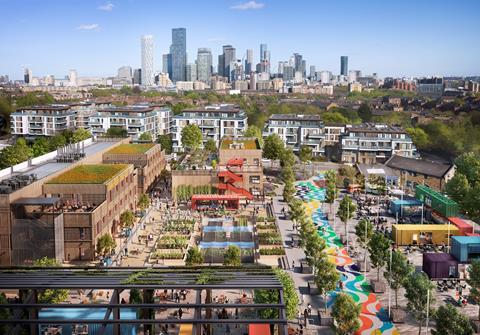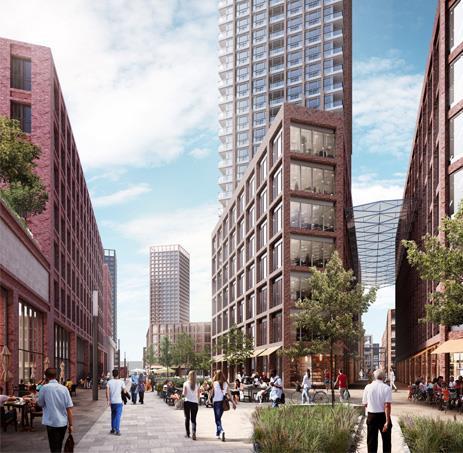Practice will work up plans for 27,870sq m facility for huge south-east London scheme’s second phase

Stanton Williams has been appointed to work up proposals for 27,870sq m life-sciences building that will form part of the second phase of British Land’s Canada Water masterplan.
The practice – which won the Stirling Prize in 2012 for its Sainsbury Laboratory in Cambridge – has a brief to “consider the potential to accommodate a range of complex scientific requirements, within an uplifting and highly sustainable environment” for the project.
British Land and development partner AustralianSuper have also specified a scheme that “encourages interaction, maximises daylight and promotes wellbeing”.
Southwark Council approved British Land’s £3.3bn masterplan for Canada Water in 2019. Drawn up by Allies & Morrison, it includes more than 40 buildings across 21ha – and the delivery of workspace for 20,000 people as well as 3,000 homes.

Work on the first phase includes a 2,800sq m development of modular laboratory space called The Paper Yard, which is due to be ready for occupation in May. British Land said the project, which was designed by Hawkins Brown, was seeing “positive early interest from the life-sciences sector”.
The Paper Yard is next door to the TEDI-London development of engineering enterprise space delivered for King’s College London, Arizona State University and UNSW Sydney. It was also designed by Hawkins Brown.
Stanton Williams director Richard Wardle said the firm was delighted to have been appointed to the second phase of the Canada Water regeneration project.
“This is a wonderful opportunity to contribute to the creation of a vibrant and collaborative environment that will foster innovation and nurture a new sense of community in the heart of the post-industrial Southwark Docks,” he said.
















No comments yet